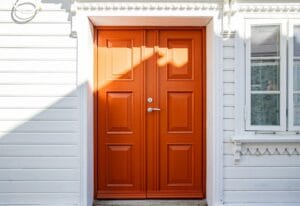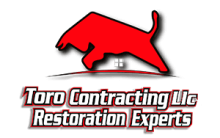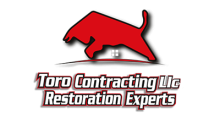Imagine waking up on a crisp Maryland fall morning, the colorful leaves swirling in the breeze outside your window. Yet, as you sip your coffee, you notice a faint damp smell indoors or a chilly draft creeping through the walls. This common scenario highlights a challenge many Maryland homeowners face during the colder months , protecting their homes from moisture intrusion and dramatic temperature changes. Here’s where smart siding upgrades become not just a matter of beauty, but a crucial shield for your home’s health and comfort.
Maryland’s climate can be unforgiving. Fall brings significant temperature swings that stress exterior building materials, while elevated humidity and rainfall increase the risk of moisture penetrating your home’s walls. Without effective siding, the consequences can range from peeling paint and warped walls to costly mold issues and a spike in heating bills. This is why investing in high-quality siding upgrades can be a game-changer for homeowners eager to safeguard their property and enhance energy efficiency.
In this article, you’ll discover how Maryland siding upgrades protect your home against moisture and temperature fluctuations that characterize the fall season. We will explore the most effective siding materials tailored to handle Maryland’s unique weather challenges, from durable vinyl and fiber cement options to innovative insulated siding. You’ll learn practical tips on identifying when your current siding needs an upgrade and how to spot signs of moisture damage early before small concerns escalate into expensive repairs.
Moreover, we’ll discuss how these siding enhancements not only fortify your home’s exterior against the elements but also boost curb appeal and increase resale value. By understanding the full benefits of Maryland siding upgrades, you’ll be equipped to make informed decisions that combine style, durability, and protection.
Whether you’re a homeowner preparing for the colder months ahead or planning a long-term investment in your property’s infrastructure, this guide will walk you through everything essential about siding upgrades in Maryland. Say goodbye to drafts, moisture damage, and fluctuating indoor temperatures , and hello to a warmer, safer, and more beautiful home this fall.
Stay tuned as we break down the best siding options, maintenance tips, and expert advice you need for effective Maryland siding upgrades that truly shield your home from moisture and temperature swings.
Key Takeaways
Siding upgrades in Maryland are essential to protect homes from moisture intrusion and sharp fall temperature swings.
High humidity, rainfall, and fluctuating temperatures can damage exterior walls, causing warping, mold growth, and higher energy costs.
Modern materials like fiber cement, insulated vinyl, and composite siding offer superior durability, energy efficiency, and weather resistance.
Proper installation, sealing, and moisture barriers are critical to prevent water infiltration and extend siding lifespan.
Upgraded siding enhances not only protection but also curb appeal and property value—making it a smart long-term investment.
Insulated siding helps regulate indoor temperatures, reducing heating costs during Maryland’s cold fall and winter months.
Routine inspections and maintenance after heavy rain or temperature changes help catch early signs of wear before they become costly repairs.
Smart siding choices transform homes into resilient, energy-efficient, and visually appealing sanctuaries built to thrive through every Maryland season.
Why Siding Upgrades Are More Important Than You Think for Maryland Homes
When it comes to protecting your home in Maryland, siding upgrades aren’t just a cosmetic enhancement, they’re a vital defense against the notorious moisture and temperature fluctuations this region experiences, especially in the fall. So, what exactly are siding upgrades, and why should every Maryland homeowner consider them essential?
Siding upgrades refer to the process of replacing or enhancing the exterior cladding of your home with modern, durable materials that offer superior protection and aesthetic appeal compared to older siding options. These upgrades can range from installing fiber cement panels and vinyl siding to advanced composite materials designed to withstand the local climate challenges.
Maryland’s unique geographical position subjects homes to a cocktail of moisture-heavy air, frequent rain, and drastic temperature swings during the autumn months. According to the National Oceanic and Atmospheric Administration (NOAA), Maryland often records humidity levels exceeding 80% in fall, while temperatures can fluctuate from highs in the 70s°F during the day to chilly lows near freezing at night. These environmental factors accelerate siding wear and tear, leading to issues like warping, cracking, and mold growth, threats that can compromise the structural integrity of your home over time.
Consider the story of the Johnson family from Baltimore. They delayed upgrading their decades-old wooden siding, hoping it would last another few years. However, after a particularly wet and cold fall, they noticed bubbling paint, water stains inside their walls, and eventually costly repairs related to moisture infiltration. After upgrading to modern fiber cement siding with a moisture-resistant barrier, they not only boosted their home’s curb appeal but also gained peace of mind knowing their home was shielded against Maryland’s unpredictable climate.
Statistics further highlight the value of siding upgrades: Homes with modern siding materials experience up to a 40% reduction in moisture-related damage, according to a study by the Home Improvement Research Institute (HIRI). Moreover, energy efficiency improvements from upgraded siding can reduce heating and cooling costs by up to 20%, making it a smart financial and environmental choice.
In essence, siding upgrades in Maryland are more than just a facelift, they are strategic enhancements that protect your investment, improve energy efficiency, and safeguard your family’s health by preventing mold and mildew. As the seasons change, and fall’s moisture and temperature swings set in, having upgraded siding is your best defense against the elements.
Tips for Smart Maryland Siding Upgrades: Shield Your Home from Moisture and Fall Temperature Swings
✅ Choose Weather-Resistant Materials: Opt for siding materials like fiber cement or vinyl that resist moisture and tolerate Maryland’s fall temperature fluctuations without warping or cracking.
✅ Ensure Proper Installation: Hire experienced professionals who will install your siding with attention to sealing and flashing, crucial for preventing moisture infiltration.
✅ Add Insulation Layers: Upgrade your siding with insulated panels to improve energy efficiency and maintain comfortable indoor temperatures during chilly Maryland fall evenings.
✅ Inspect and Repair Underlying Structures: Before siding installation, check the underlying walls for any damage or mold caused by moisture; fix issues to avoid recurring problems.
✅ Invest in Water-Resistant Barriers: Integrate house wraps or moisture barriers beneath the siding to act as a secondary shield against rain and humidity.
✅ Maintain Adequate Ventilation: Make sure your siding system allows proper airflow to reduce moisture buildup and prevent mold growth in Maryland’s humid climate.
✅ Opt for Light-Colored or Reflective Finishes: These finishes help reflect sunlight, reducing heat absorption during late summer and early fall temperature swings.
✅ Schedule Regular Maintenance Checks: Inspect your siding yearly, especially after heavy rains and temperature changes in fall, to catch and address damage early.
💡 Extra Tip: Complement your siding upgrades with gutter improvements to direct water away from your home’s foundation and siding surfaces, enhancing long-term protection.

Key Concepts
When discussing siding upgrades, especially within the unique climate of Maryland, it is essential to grasp several foundational ideas that explain why these improvements are more than just cosmetic enhancements, they are vital shields against environmental challenges.
The Role of Siding as a Protective Barrier
Imagine your home as a sturdy ship sailing through the ever-changing seas of Maryland’s weather. The siding acts like the hull of this vessel, safeguarding it from the elements that constantly batter and erode its surface. Maryland’s fluctuating temperatures during fall and the pervasive moisture in the environment test the endurance of exterior materials every day.
Siding is not merely decorative cladding; it is the first line of defense against moisture intrusion. Moisture that seeps into walls can lead to rot, mold, and structural damage. When you elevate to upgraded siding, you enhance the integrity of this barrier, ensuring that your home better resists these threats. The science behind siding upgrades often involves materials engineered for impermeability and breathability simultaneously, allowing moisture that does get in to escape without compromising the shield’s consistency.
Thermal Performance and Seasonal Swings
Think of siding upgrades as the insulation layer of a winter jacket, crucial during Maryland’s brisk fall. The transition from warm days to chilly nights can cause materials within a home’s walls to expand and contract. This constant movement can create tiny fissures or weaknesses in standard siding materials, which, if left unaddressed, become gateways for moisture penetration.
Upgraded siding solutions frequently incorporate improved thermal properties, whether through denser materials or integrated insulating layers, that moderate the effects of these daily temperature swings. This mirrors the way a well-designed jacket retains warmth by adapting to the body’s needs while protecting from external cold. By mitigating the stress of thermal fluctuations on the home’s envelope, siding upgrades play a pivotal role in preserving structural soundness and extending the lifespan of the external facade.
Material Innovation and Durability
Maryland’s particular weather patterns, a delicate mix of humidity, rain, and seasonal temperature shift, demand siding materials that transcend traditional wood or vinyl choices. The story of siding upgrades often involves the evolution of materials such as fiber cement, engineered wood, or composite panels that offer enhanced durability.
Such materials often combine resistance to moisture absorption with robustness against physical wear and UV radiation. For instance, fiber cement siding is akin to the tough armor of a medieval knight: strong, resilient against blows (in this context, hail, wind, rain), and impervious to rot and insect damage. This material science advancement underpins why investing in upgraded siding is not just about curb appeal but about protecting the home’s core.
The Interplay of Aesthetics and Functionality
Upgrading siding is not merely a utilitarian decision; it is where function meets form. The narrative of homeownership is deeply tied to the visual story a house tells. Upgraded siding introduces textures, colors, and profiles that can transform the façade while embedding critical protection mechanisms.
This duality is much like a well-crafted novel, where the narrative (protection against moisture and temperature swings) intertwines seamlessly with the prose’s beauty (the home’s visual appeal). It underscores the reason why choosing upgraded siding isn’t just an architectural choice but a holistic approach to home environment management.
Environmental Adaptation and Longevity
Maryland’s climate challenges do not exist in isolation; they reflect a broader storyline of environmental adaptation. Siding upgrades symbolize the homeowner’s response to these dynamic external factors, adapting their properties to withstand and harmonize with natural forces rather than succumb to them.
This perspective casts siding upgrades as an investment in longevity, a commitment to extending the story of a home through resilient, climate-smart materials and installation methods. It’s akin to planting deep roots in fertile soil that might undergo seasonal storms; the deeper and stronger the roots (or siding), the more likely the tree, or home, thrives over time.
In weaving together these key concepts, protection, thermal resilience, material innovation, aesthetics, and environmental adaptation, the essential narrative of siding upgrades in Maryland emerges. It is a narrative anchored in defense against the subtle yet relentless impact of moisture and temperature swings that define the region’s fall, telling a story of homes fortified to endure, protect, and flourish.
Frequently Asked Questions about Siding Upgrades
❓ What are the main benefits of siding upgrades in Maryland?
Upgrading your siding in Maryland helps protect your home from moisture damage caused by the state’s humid climate. It also shields your home from fall temperature swings, improving energy efficiency and maintaining indoor comfort year-round.
❓ Which types of siding are best for Maryland’s climate?
Vinyl siding and fiber cement siding are popular choices in Maryland due to their durability and resistance to moisture. These materials can withstand humidity and temperature fluctuations better than traditional wood siding.
❓ How much does a siding upgrade typically cost in Maryland?
Costs vary depending on material and home size, but on average, homeowners can expect to pay between $7,000 and $15,000 for a full siding upgrade. Investing in quality siding can save money long-term by reducing repair and energy costs.
❓ Can siding upgrades improve my home’s energy efficiency?
Yes, many modern siding options come with insulated layers that enhance thermal performance, helping to keep your home warmer during chilly Maryland falls and cooler in the summer, which can lower energy bills.
❓ How do I know if it’s time to upgrade my siding?
Look out for signs like peeling paint, warping, moisture stains, or increased drafts. If your siding shows visible damage or your energy bills have spiked, a siding upgrade might be necessary to protect your home effectively.






